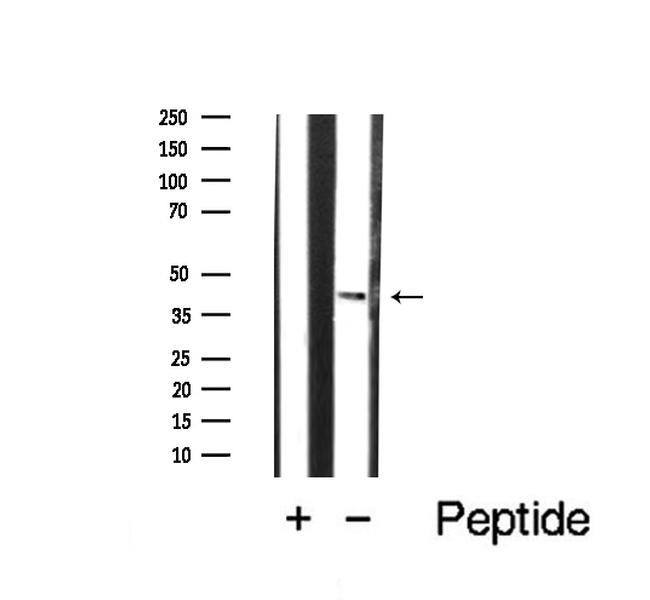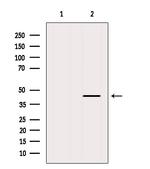Search Thermo Fisher Scientific
Product Details
PA5-114965
Species Reactivity
Host/Isotype
Class
Type
Immunogen
Conjugate
Form
Concentration
Purification
Storage buffer
Contains
Storage conditions
Shipping conditions
RRID
Product Specific Information
Antibody detects endogenous levels of total CCR5.
Target Information
Human immunodeficiency virus (HIV) and related virus require coreceptors, in addition to CD4, to infect target cells. Some G protein-coupled receptors including CCR5, CXCR4, CCR3, CCR2b and CCR8 in the chemokine receptor family, and four new human molecules GPR15, STRL33, GPR1 and V28 were recently identified as HIV coreceptors. Among them, CCR5 (CC-CKR-5) is a principal coreceptor for macrophage- and dual-tropic HIV-1 strains fusion and entry of human white blood cells. CCR5 is required for the infection by HIV-1, HIV-2, and SIV. The beta-chemokines RANTES, MIP-alpha and MIP-beta are the ligands for CCR5 and prevent infection by M-tropic HIV-1. CCR5 associates with the surface CD4-gp120 of HIV complex and leads to membrane fusion and virus entry of target cells. The amino-terminal domain and the extracellular loops of CCR5 serve as HIV biding sites. CCR5 messenger RNA is expressed in lymphoid organs and monocytes.
For Research Use Only. Not for use in diagnostic procedures. Not for resale without express authorization.
References (0)
Bioinformatics
Protein Aliases: C-C chemokine receptor type 5; C-C CKR-5; C-C motif chemokine receptor 5 A159A; CC-CKR-5; CCR-5; CD195; CD195 antigen; chemokine (C-C motif) receptor 5; chemokine (C-C) receptor 5; chemokine receptor CCR5; CHEMR13; HIV-1 fusion coreceptor; MIP-1 alpha receptor
Gene Aliases: AM4-7; CC-CKR-5; CCCKR5; CCR-5; CCR5; CD195; CKR-5; CKR5; CMKBR5; IDDM22
UniProt ID: (Human) P51681, (Mouse) P51682, (Rat) O08556
Entrez Gene ID: (Human) 1234, (Mouse) 12774, (Rat) 117029

Performance Guarantee
If an Invitrogen™ antibody doesn't perform as described on our website or datasheet,we'll replace the product at no cost to you, or provide you with a credit for a future purchase.*
Learn more
We're here to help
Get expert recommendations for common problems or connect directly with an on staff expert for technical assistance related to applications, equipment and general product use.
Contact tech support


